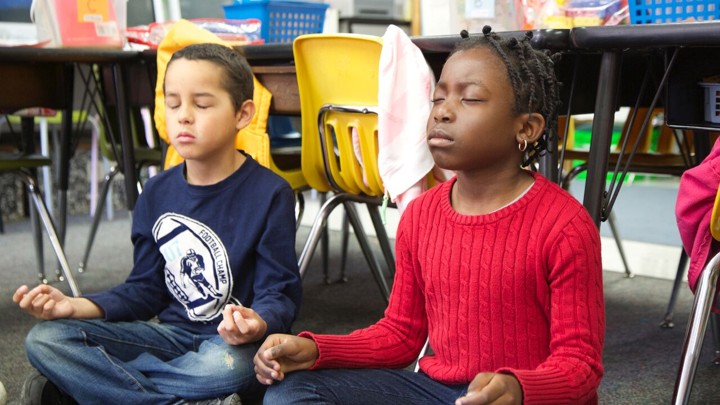A five-minute walk from the rickety, raised track that carries the 5 train through the Bronx, the English teacher Argos Gonzalez balanced a rounded metal bowl on an outstretched palm. His class—a mix of black and Hispanic students in their late teens, most of whom live in one of the poorest districts in New York City—by now were used to the sight of this unusual object: a Tibetan meditation bell.
“Today we’re going to talk about mindfulness of emotion,” Gonzalez said with a hint of a Venezuelan accent. “You guys remember what mindfulness is?” Met with quiet stares, Gonzalez gestured to one of the posters pasted at the back of the classroom, where the students a few weeks earlier had brainstormed terms describing the meaning of “mindfulness.” There were some tentative mumblings: “being focused,” “being aware of our surroundings.”
Gonzalez nodded. “Right. But it’s also being aware of our feelings, our emotions, and how they impact us.”
Arturo A. Schomburg Satellite Academy is what is known in New York City as a transfer school, a small high school designed to re-engage students who have dropped out or fallen behind. This academy occupies two floors of a hulking, grey building that’s also home to two other public schools. For the most part, Gonzalez told me, the kids who come here genuinely want to graduate, but attendance is their biggest barrier to success. On the day I visited, one of Gonzalez’s students had just been released from jail; one recently had an abortion; one had watched a friend bleed to death from a gunshot wound the previous year. Between finding money to put food on the table and dealing with unstable family members, these students’ minds are often crowded with concerns more pressing than schoolwork.


